Features of infrared floodlights
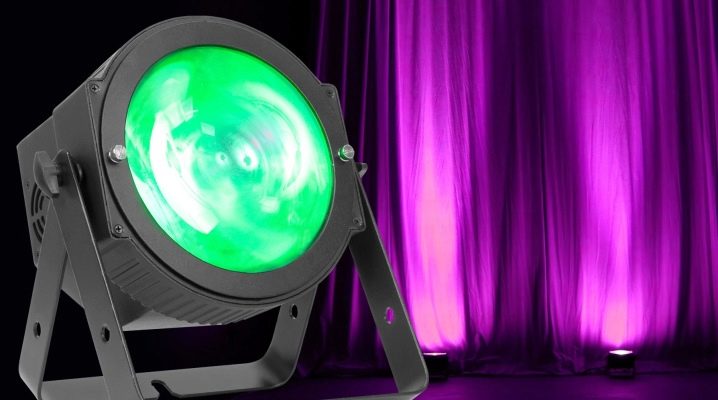
High-quality video surveillance at a great distance at night is associated with good lighting. Unfortunately, most standard luminaires leave dark areas where the camera image will be blurry. To eliminate this disadvantage, infrared illumination is used. The best source of IR waves for video shooting is considered to be a separately installed emitter, technical features and popular models of which will be considered.
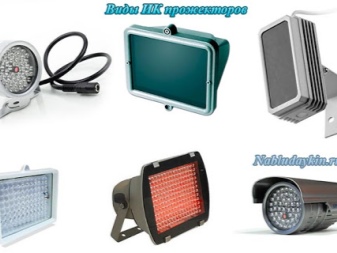
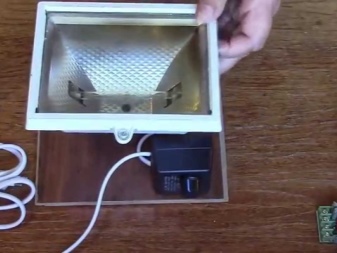
Device and principle of operation
Infrared radiation is called light waves that are invisible to the human eye. However, cameras equipped with IR filters are capable of capturing them.
The IR illuminator includes a light source and a diffusion-focusing housing. Older models came with lamps. Today they have been replaced by LEDs, since this option implies:
- energy saving;
- combination of long range with low power;
- more compact dimensions;
- ease of installation;
- less heating (up to a maximum of 70 degrees), which complies with fire safety standards;
- the ability to work without interruption up to 100,000 hours;
- wide range of products.

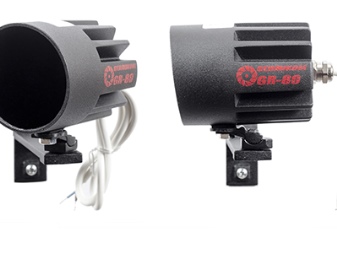
The wavelengths emitted by the infrared illuminator are in the range of 730-950 nm. The human eye practically does not perceive them or can distinguish a faint red glow. To eliminate this effect, the device is supplemented with a light filter.
As a result, night photography is not inferior in quality to recordings taken during the day. And the intruder, who came under cover of night, does not even suspect that the darkness does not hide him. This makes it possible to quickly react to an incident.
Besides, Contrary to popular belief, infrared waves are harmless to health. Unlike ultraviolet radiation, which burns and destroys the cells of the body, waves longer than the visible spectrum do not penetrate tissues and do not affect the skin and eyes. Therefore, the use of infrared emitters is safe in places where people stay.
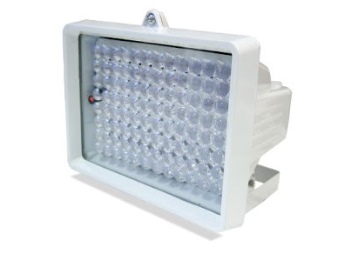
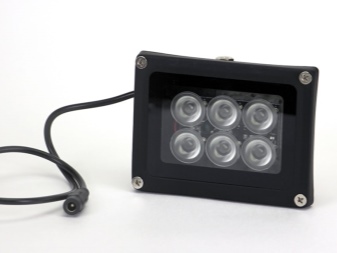
Important: in addition to IR illuminators, cameras with built-in infrared illumination are also available. However, aligning the devices increases the risk of lens overexposure. Therefore, this design is not suitable for long distance shooting.
Main characteristics
The range of IR illuminators is wide enough. On the market you can find models of different manufacturers and price categories. However, technical parameters become an important criterion in the selection.
- Wavelength. Modern devices operate in the 730-950 nm range.
- Operating range. This parameter is determined by the maximum distance at which the camera is able to capture a human figure. Low-cost projectors operate one and a half meters from the installation point. More powerful models can cover distances of up to 300 meters. The increase in range is achieved by decreasing the angle of view and increasing the sensitivity of the camera sensor.
- Viewing angle. The indicator is in the range of 20-160 degrees. To ensure recording without dark corners, the field of view of the spotlight must be greater than that of the camera.
- Network parameters. Depending on the model, the floodlights can operate at a current of 0.4-1 A. Voltage at 12 volts is the minimum for such devices. The maximum is 220 volts.
- Power consumptionwhich can reach 100 watts.
What matters is the way the system is activated. Often the spotlight is switched on from a photo relay.More expensive models are equipped with a light-sensitive sensor. As soon as there is not enough natural light, the floodlight turns on automatically.
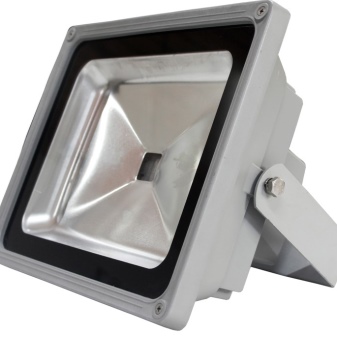
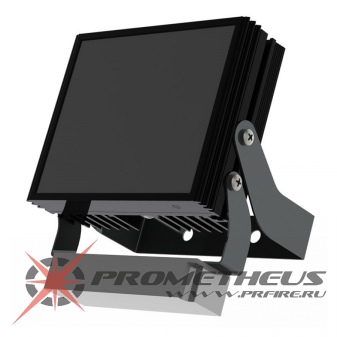
Do not forget about the type of lamps built into the body. LED lamps are considered indicators of durability, efficiency and safety of the device.
Popular brands
Among the recommended models of IR illuminators, some options can be distinguished.
- Bastion SL-220VAC-10W-MS. The device is distinguished by a power of 10 W, a luminous flux of 700 lm and the ability to operate from a 220 V network. This option attracts with a budget price.
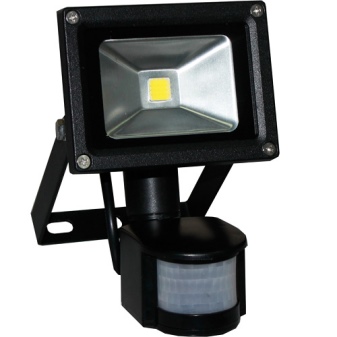
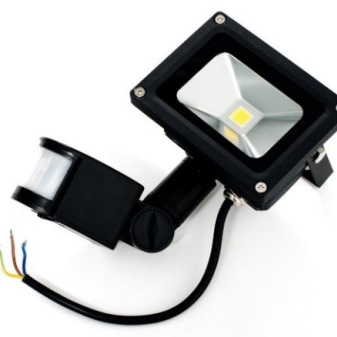
- Beward LIR6, which is available in several variants. The cheap model covers a distance of 20 meters with a 15-degree viewing angle. In a more expensive version, the distance is increased to 120 meters, and the viewing angle is up to 75 degrees. There is also an automatic switch-on function if the illumination becomes less than 3 lux.
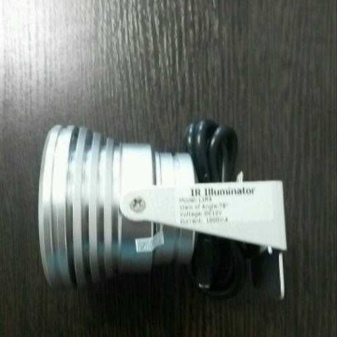

- Brickcom IR040. Compared to domestic counterparts, the products of the Thai manufacturer emit waves at 840 nm. 4 LEDs operating at an angle of 45 degrees are used as a light source.
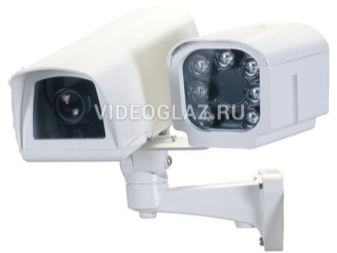
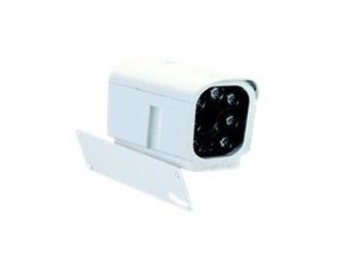
- Dominiant 2+ IntraRed, which is a Led floodlightproviding a long viewing range. The light source here is German-made LEDs. Automatic switching on occurs when the illumination is below 10 lux.
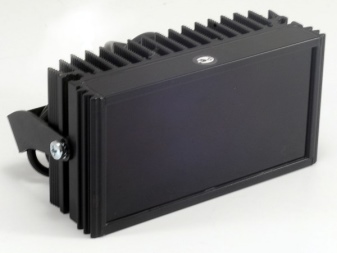
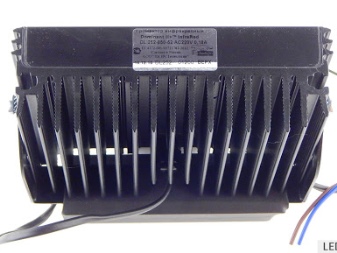
- Germikom XR-30 (25W) is considered a fairly expensive option, produced in Russia. However, the wavelength, the ability to illuminate an area 210 meters away, giving a 30-degree view, makes it an attractive option for street lighting.
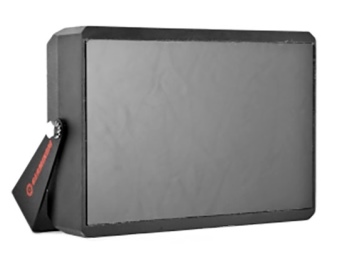
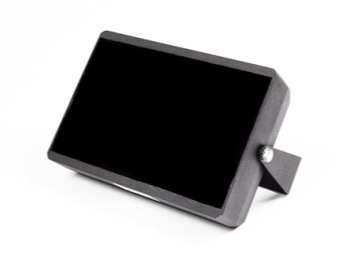
- IR Technologies D126-850-10. This option is distinguished by the ability to manually adjust the power. The body of the device is protected from water, dust, polarity reversal and voltage surges. The device turns on automatically at nightfall. There is also an output that switches the camera's day and night modes.
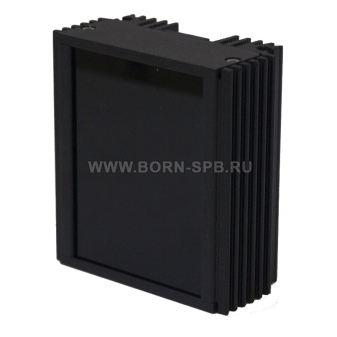
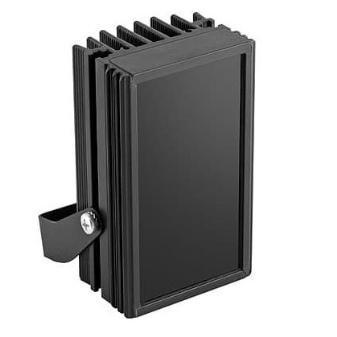
- Axis T90D35 W-LED. A feature of this Swedish-made device is the ability to adjust the viewing angle within 10-80 degrees. The range of the wave beams is 180 meters.
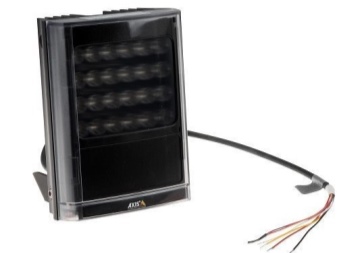
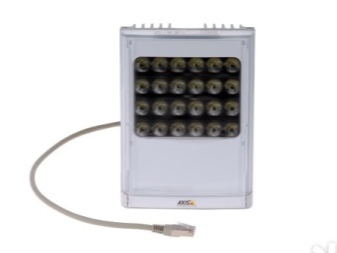
Simple models of IR illuminators can be purchased for 1000-1500 rubles. Options with a large set of functions can cost 3000-5000 rubles. The cost of devices from global brands exceeds 100,000.
Selection Tips
When buying an infrared illuminator, you should focus on certain parameters.
- The wavelength, where the optimal indicator is 730-880 nm. At lower values, the reddish glow will be captured by the eye. Long wavelengths allow for covert shooting. However, with an increase in this indicator, the radiation power and range decrease, which negatively affects the quality of the resulting image. This is partially compensated by the sensitivity of the lens.
- Distance. Here you need to navigate based on your needs. If indoors it is not necessary to control an area of more than 10 meters in length, then on the street this will not be enough.
- The angle of view, which is determined by the parameters of the camera. A downward difference will result in more blind spots in the shot. Buying a high angle floodlight will increase the number of possible installation locations, but will not affect the camera's view. This can result in wasted power, except in situations where the backlight of a single device powers multiple cameras.
When shopping for an IR illuminator, you should also look out for power and energy consumption figures. Calculating the maximum possible network load will help determine the compatibility of devices. In addition, models with lower power are able to work autonomously for some time, which expands the range of compatible video cameras.
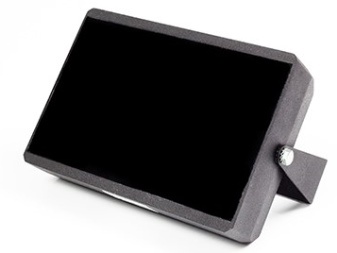
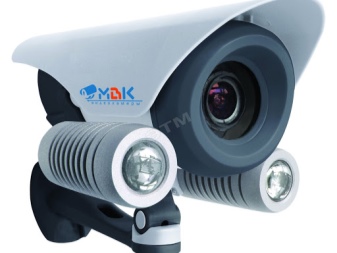
Areas of use
The use of an IR illuminator is determined by its belonging to one of three groups.
- Short-range devices operating at a distance of up to 10 meters are installed for video surveillance in rooms where shooting is needed, which does not allow the use of light sources. This could be a bank, hospital, or cashier.
- Medium IR floodlights (up to 60 meters) are needed for street lighting. These devices have a wide viewing angle that allows you to cover a large, open area.
- Long-range searchlights are used where a narrow beam of waves is required, providing concentration on an object located 300 meters from the camera. Such devices are produced for clubs, theaters or cinemas.
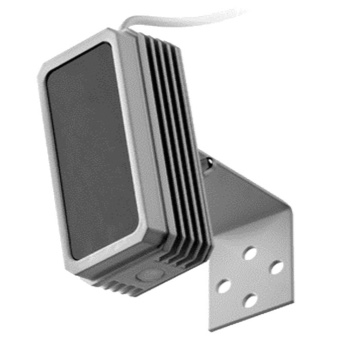
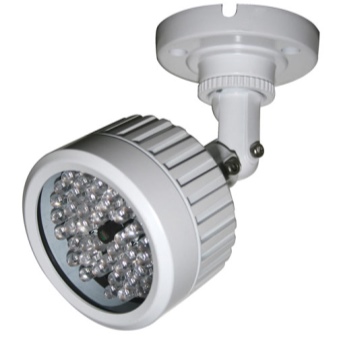
Please note: Long range IR floodlights are required for road cameras. This allows the fixation to be carried out without dazzling the drivers.
Installation
The main condition for choosing a spotlight is its compatibility with the camera. Otherwise, high-quality recording, taking into account the set distance, will be impossible. The installation of the device is carried out taking into account some of the nuances.
- It is important to take care of the uniformity and clarity of the shot area. For this, the spotlight is placed no further than 80 meters from the camera.
- You will need to match the viewing angles of the spotlight and the camera lens.
- The minimum height at which the device is installed is 1 meter. It is fixed to the support, the wall of the building. This increases the efficiency of the device as well as contributes to its safety.
- It is important to take care of protection from precipitation and direct heating by the sun. For this, a visor is installed over the searchlight.
A sealed terminal box is often used for connection. It should be borne in mind that stranded wires must be irradiated before clamping. And copper conductors should not be clamped under one screw or paired with aluminum.
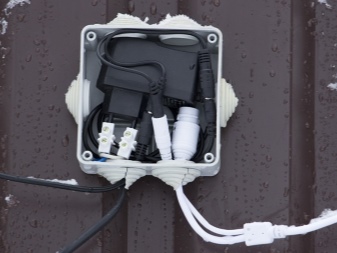
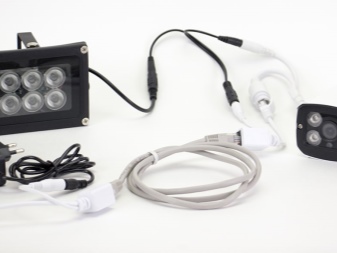
The final stage of installation is grounding. For this, either a ground wire in the supply line is used, or a separate circuit that is being built near the floodlight.
Possible problems
When using a spotlight, it should be borne in mind that the device has a possibility of overheating of the module that provides lighting. In this case, night photography will become impossible.
It should be borne in mind that this device does not eliminate the blind spots that the camera lens has. Therefore, it helps to improve image recognition in the dark, but does not make video surveillance ideal.
In addition, if you install an infrared illuminator with a camera protected by translucent glass or plastic, the infrared ray will begin to reflect from such a surface. As a result, the image will be partially blown out.
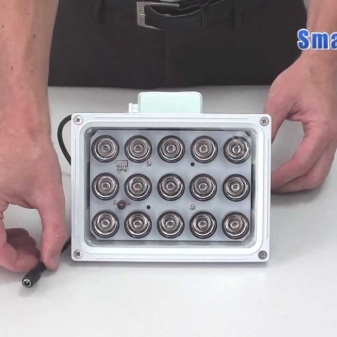
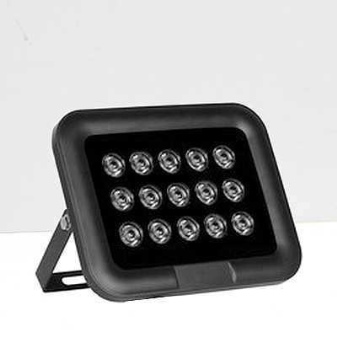













The comment was sent successfully.